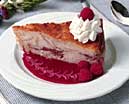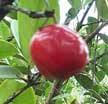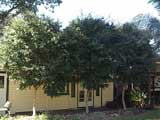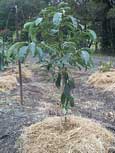November Newsletter 2001
Greg's message....
 Thank you very much for your comments about how valuable you find the newsletter and the website. We are continuing to attract a large amount of traffic and receiving more and more requests for information so the website is continuously growing. In order for it to be as user friendly and informative as possible we are considering some major restructuring. If you have any suggestions on the type of changes you would like to see, I would be most grateful to receive them.
Thank you very much for your comments about how valuable you find the newsletter and the website. We are continuing to attract a large amount of traffic and receiving more and more requests for information so the website is continuously growing. In order for it to be as user friendly and informative as possible we are considering some major restructuring. If you have any suggestions on the type of changes you would like to see, I would be most grateful to receive them.
I hope you enjoy what we have to offer this month.
Many thanks, Greg.
The Subtropics answer to the
sweet cherry
 These fruit are just some of the treasures to leave the shores of Brazil and become widely distributed throughout the tropical and subtropical areas of the world. Along with Queensland's very own Cedar bay cherry or Beach cherry, these trees are highly prized for their delicious fruits. The Brazilian cherry, Cedar bay cherry, Grumichama and Jaboticaba are the tropics answer to the sweet Cherry. Far from us having to envy those southern laden trees, these species are heavy bearers, have few cultural demands and are equal (some say surpass) to the taste and beauty of the brilliant red sweet cherry.
These fruit are just some of the treasures to leave the shores of Brazil and become widely distributed throughout the tropical and subtropical areas of the world. Along with Queensland's very own Cedar bay cherry or Beach cherry, these trees are highly prized for their delicious fruits. The Brazilian cherry, Cedar bay cherry, Grumichama and Jaboticaba are the tropics answer to the sweet Cherry. Far from us having to envy those southern laden trees, these species are heavy bearers, have few cultural demands and are equal (some say surpass) to the taste and beauty of the brilliant red sweet cherry.
| Common Name: | Scientific Name: |
| Cedar Bay Cherry | Eugenia carissiodes |
| Grumichama | Eugenia dombeyi |
| Brazilian Cherry/Pitanga | Eugenia uniflora |
| Jaboticaba | Myrciara caufiflora |
| FAMILY: MYRTACEAE |
Brazilian Cherry
 The Brazilian Cherry is an aromatic dark red berry with a sweet pleasant taste. The fruit is up to 3cm in diameter, has an 8 ribbed shiny appearance and contains one or two comparatively large seeds. If a good selection is planted and the fruit left to properly ripen to an almost black red colour the juicy orange flesh has an excellent flavour. Poorer selections or unripe fruits have a more acid resinous taste. The fruit can be borne singly or in clusters and ripens very soon after flowering with the main crop maturing during Spring with smaller crops throughout the year. Trees begin to bear between 2 and 4 years.
The Brazilian Cherry is an aromatic dark red berry with a sweet pleasant taste. The fruit is up to 3cm in diameter, has an 8 ribbed shiny appearance and contains one or two comparatively large seeds. If a good selection is planted and the fruit left to properly ripen to an almost black red colour the juicy orange flesh has an excellent flavour. Poorer selections or unripe fruits have a more acid resinous taste. The fruit can be borne singly or in clusters and ripens very soon after flowering with the main crop maturing during Spring with smaller crops throughout the year. Trees begin to bear between 2 and 4 years.
The tree is an evergreen shrub or small tree with an attractive compact growth habit to 3 - 4 metres. They are being used more and more in landscaping, especially in hedging due to their attractive rich wine-coloured new growth. The aromatic foliage can be crushed and used as an effective fly repellant.
Grumichama
 The grumichama is probably the favourite of the group, not only for its delicious fruit but the ornamental value of the tree. The tree produces masses of small white myrtaceae flowers that bees find irresistable. The fruit round dark purple-scarlet to black fruit is plump and borne on clusters that are easily harvested. The soft melting flesh is very sweet with an excellent flavour. The fruit would be well suited to cakes and other deserts but is so delicious eaten fresh that its unlikely it would make it to the cooking bench. After flowering the fruit forms very quickly. This is a good time to keep adequate water up to the tree as it will ensure nice full sweet fruit.
The grumichama is probably the favourite of the group, not only for its delicious fruit but the ornamental value of the tree. The tree produces masses of small white myrtaceae flowers that bees find irresistable. The fruit round dark purple-scarlet to black fruit is plump and borne on clusters that are easily harvested. The soft melting flesh is very sweet with an excellent flavour. The fruit would be well suited to cakes and other deserts but is so delicious eaten fresh that its unlikely it would make it to the cooking bench. After flowering the fruit forms very quickly. This is a good time to keep adequate water up to the tree as it will ensure nice full sweet fruit.
The tree is a large evergreen shrub with spectacular glossy green leaves. It will easily rival other ornamental shrubs. A lot of the fruit is hidden behind the large leaves so the amount of fruit harvested is high even if you do have to compete with the birdlife. One of our favourites for the garden for both ornamental and fruiting purposes. Great for organic gardeners as well as its virtually non effected by pests and disease.
Cedar Bay Cherry
 The Cedar Bay Cherry is often referred to as a bush food but don't underestimate the value of the fresh fruit as it is well worth being punneted and taking its place beside strawberries, jaboticabas and other sweet fruits.
The Cedar Bay Cherry is often referred to as a bush food but don't underestimate the value of the fresh fruit as it is well worth being punneted and taking its place beside strawberries, jaboticabas and other sweet fruits.
The name Cedar Bay Cherry is derived from the fact that it is a common shrub at Cedar Bay in the Daintree area. It can also be found anywhere from Bundaberg to the Torres Strait and into Papua New Guinea and many other countries as well. It's a very tough shrub and is seen growing in many forms and varied habitats whether they be rocky headlands, close to the beach, monsoon forests, dry creek beds and dry rainforests.
A pretty tree due to its thick textured leaves that when crushed exude an apple-like smell so like other members of the Myrtaceae family. The flowers are white and delicate with an attractive display of stamens common to all the eugenias. The fruit that follows can vary to a high degree depending on where it originated. The fruits from the rainforest tend to be more round and plump and can reach the size of a large jaboticaba. The fruit is loved by all those who try it and is delicious eaten fresh or in any other way you would eat cherries.
As one of Australia's very own this is a great choice for ornamental gardeners, die-hard native enthusiasts and home orchardists.
Jaboticaba
The Jaboticaba is one of the members of the Myrtaceae that stands out from the rest not just because of it delicious and spectacular looking fruit but because of its ornamental value.
Th e fruit displays masses of stamen filled white flowers that give the tree branches the appearance of being covered in cotton wool or snow. You won't miss the flowering time of your tree due to the hum of very busy bees and the beautiful scent of the flowers wafting through the orchard. Flowering occurs in spring, particularly in areas with dry winters, and coincides with the first spring rainfall. Like the Grumichama keep the tree well watered at this stage to ensure the most plump and succulent fruits.
e fruit displays masses of stamen filled white flowers that give the tree branches the appearance of being covered in cotton wool or snow. You won't miss the flowering time of your tree due to the hum of very busy bees and the beautiful scent of the flowers wafting through the orchard. Flowering occurs in spring, particularly in areas with dry winters, and coincides with the first spring rainfall. Like the Grumichama keep the tree well watered at this stage to ensure the most plump and succulent fruits.
 This tree is a real talking point due to the way the fruit matures on the tree. The fruit is borne very closely to the trunk. This mean there is plenty of fruit for we humans as the larger birds are unable to get through the thick branches to the berries. Jaboticaba is eaten fresh and has an abundance of juice and a particularly sweet flavour. The flesh is translucent, similar to that of a grape, with small edible seeds. The fruit needs to be eaten soon after picking as it does not keep well at room temperature and will last no more than 3 days. There are two forms of jaboticabas, the small fruiting and larger fruiting/large leaf form. Both are delicious, however the larger fruit has a tougher bitter skin.
This tree is a real talking point due to the way the fruit matures on the tree. The fruit is borne very closely to the trunk. This mean there is plenty of fruit for we humans as the larger birds are unable to get through the thick branches to the berries. Jaboticaba is eaten fresh and has an abundance of juice and a particularly sweet flavour. The flesh is translucent, similar to that of a grape, with small edible seeds. The fruit needs to be eaten soon after picking as it does not keep well at room temperature and will last no more than 3 days. There are two forms of jaboticabas, the small fruiting and larger fruiting/large leaf form. Both are delicious, however the larger fruit has a tougher bitter skin.
A medium sized tree, not exceeding 12m it has many branches. It is slower growing than those listed below but is well worth the wait. It can be used in many forms in the garden, as a potted specimen, single specimen plant, hedge plant, or screen trees.
Wattle we think of next?
As you know from our previous newsletter we are always full of great ideas and advice on how to get the absolute best results from your fruit trees. The following idea is another one of Greg's innovative ideas and we've tried and tested it with great results. Its a low cost, effective tree guard. No its not plastic, its Wattle.

 Everyone must know of a wattle tree nearby. They're the tough roadside or garden ornamental plants that are covered in yellow blossom throughout winter when not much else is flowering. Take approximately 1 metre branches from the tree. The fine leaf wattles such as Ac. floribunda or Ac. fimbriata are good. Place one or two of the branches in the ground beside your freshly planted tree. We used this system around some avocadoes in April with great success. The wattle prevented the young avocadoes from sun and mild frost burn on their susceptible stems.
Everyone must know of a wattle tree nearby. They're the tough roadside or garden ornamental plants that are covered in yellow blossom throughout winter when not much else is flowering. Take approximately 1 metre branches from the tree. The fine leaf wattles such as Ac. floribunda or Ac. fimbriata are good. Place one or two of the branches in the ground beside your freshly planted tree. We used this system around some avocadoes in April with great success. The wattle prevented the young avocadoes from sun and mild frost burn on their susceptible stems.
By incorporating the wattle as a protective measure you greatly reduce the level of tranplant shock to the plant. It also offers an effective shelter and frost protector. The leaves will stay on the branch for over a month before falling off and letting the now established and healthy tree grow up to its fullest potential.
Becoming a member of the garden police
As peaceful and relaxing as gardening is, there are times when we just have to get tough. And at this time of the year our common enemy is the FRUIT FLY.
Until the recent discovery of an exotic fruit fly in Cairns there were two types of fruit fly in Australia, the Queensland Fruit Fly Bactrocera (Dacus) tryoni, and the Mediterranean fruit fly Ceratitis capitata. Both these are smaller than the house fly measuring around 7mm. The Queensland fly is brown with yellow bands on the body and transparent wings characteristically held at right angles to the body when the insect is stationary. The larvae are creamy white, legless, but quick moving, and grow to about 8 mm.
The Mediterranean fly, more likely to be found in Western Australia, is yellow with black and yellow markings, a yellowish abdomen and brown or yellow marks on the wings. The larvae are similar to the Queensland fly.
The Females can lay about 200 eggs in a lifetime.
A GREEN, CLEAN APPROACH
If you are hoping to control fruit fly in an organic and holistic way, its possible but there are no simple solutions and a well laid out plan is needed. Fruit can be picked green and ripened indoors if you are in a known fruit fly area. But, this is often in contrast to our wishes as aren't we growing home grown trees because the tree ripened fruit is far superior to the supermarket variety?
Keep the orchard as clean as possible. Never leave decaying fruit on the ground. Chickens or ducks left to free range under the canopy will help here but if they're not available throw the fruit away. If you are really serious about destroying the fruit fly immerse it in water, place it in a sealed bag until its completely decomposed or boil it. Do not place affected fruit in uncovered compost heaps.
LURES AND TRAPS
The most common control method is the use of lures and traps. The traps are filled with a substance that the flies are attracted to whereby they fly into the trap and are killed either by poisoning or drowning. To purchase organic fruit fly lures contact Green Harvest organic Garden Supplies at www.greenharvest.com.au or alternatively have a go at making your own.
The following recipe sounds like a strong brew but needs to be replaced every 10 days.
1 litre of water
2 cups of urine
3 teaspoons vanilla essence
1 teaspoon vegemite
1 cup sugar
Mix ingrediants together pour about 1 or 2 cups of ingredient into each bottle, place traps in and around fruit trees etc. Cut the plastic bottle in half and place the opening of the bottle down into the base of the bottle. The flies will fly down into the trap and be unable to fly out hence, drowning in the liquid.
The most simple trap to make at home is to get a plastic soft drink bottle with holes made around it just below the shoulder, pour the lure in and seal the bottle. Hang it in the tree and let it do its work.
Recommended links to Qld Fruit Fly
DPI Qld - Qld Fruit Fly in Rare Fruits
Tweed Richmond Organic Growers Ass. - Organic Pest Control Methods
Permanent Variety Tags
One more quick word of advice. It is really important to have some type of permanent identification system for the trees in your orchard. Its amazing just how many people visit the nursery and ask for a pollinator for their pear, apple or stonefruit tree, but they don't know which variety they have growing. It really helps to know if you want to put in the same tree but a different variety. By doing this you can greatly extend harvest periods and get even more variations in the taste sensations that delicious home grown fruit offers.
To post your message please Contact Us




